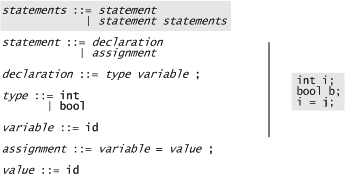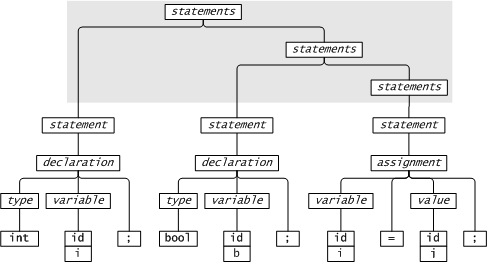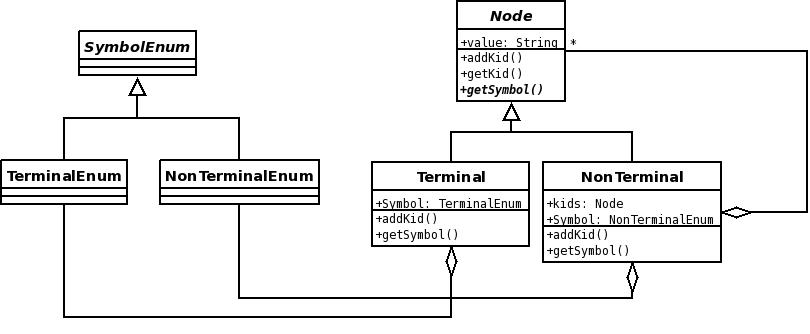Parse tree design
From CSSEMediaWiki
(Difference between revisions)
(→Class-Design) |
|||
| Line 12: | Line 12: | ||
== Class-Design == | == Class-Design == | ||
| + | === 1st Design === | ||
[[Image:ParseTree.jpeg]] | [[Image:ParseTree.jpeg]] | ||
| Line 17: | Line 18: | ||
*the addKid()-function in the Terminal class throws an exception | *the addKid()-function in the Terminal class throws an exception | ||
*symbol is of type enum, which has a representation for every symbol of the grammar. | *symbol is of type enum, which has a representation for every symbol of the grammar. | ||
| + | |||
| + | Problem: [[Beware of Typeswitch]] | ||
| + | |||
| + | === 2nd Design === | ||
| + | [[Image:ParseTreeEnum.jpeg]] | ||
| + | |||
| + | To overcome the [[Beware of Typeswitch]] problem an enum-hierarchy was added, so that a NonTerminal Symbol cannot have a Terminal Symbol. | ||
Revision as of 06:23, 9 September 2008
A context free grammar defines a language, e.g.
A parse tree shows how a sentence in the language is structured according to the grammar.
Contents |
Terminology
In parsing lingo a symbol is a name in a grammar. Each symbol is either a terminal or a non-terminal. Non-terminals appear on the left hand side of a grammar production; terminals don't.
Class-Design
1st Design
That's the first Design that came up in class. It is a Composite Pattern.
- the addKid()-function in the Terminal class throws an exception
- symbol is of type enum, which has a representation for every symbol of the grammar.
Problem: Beware of Typeswitch
2nd Design
To overcome the Beware of Typeswitch problem an enum-hierarchy was added, so that a NonTerminal Symbol cannot have a Terminal Symbol.



